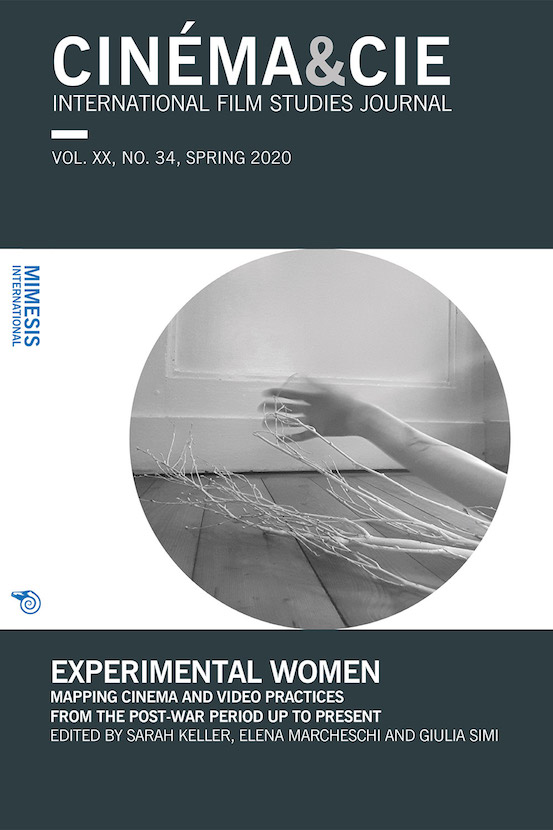‘Give me a body then...’: (In)corporated Thinking in the Cinema of Menken, Deren, and Arledge
Abstract
For Stanley Cavell and Gilles Deleuze, the human body is essential to cinema’s ability to advance thought, but the American avant-garde filmmakers Marie Menken, Maya Deren, and Sara Kathryn Arledge go much further in locating thought in embodiment rather than beyond it, even as their films are generally absent from Cavell’s and Deleuze’s writings. For instance, as Menken’s handheld camera emanates with the movements of her body, her fidgetiness expands upon the metaphysical restlessness Cavell describes as essential to thought. Menken’s camera’s immersion in her bodily movements (rather than standing apart from them) joins her work with Deren’s Bergson-inspired films as, for instance, the context of outer space in Very Eye of Night (1952) is impossible to stand outside of or apart from, analogous to Bergson’s notion of the body in the stream. Arledge’s Introspection similarly situates the body where what T.E. Hulme might describe as a ‘complex sense of varying directions of forces’ replaces a sense of distanced sight. While Deleuze pronounces, ‘Give me a body then… The body is no longer the obstacle that separates thought from itself, that which it has to overcome to reach thinking...’ and turns to Antonioni’s, Warhol’s, and Cassavetes’ tired and waiting bodies as exemplary, I argue, it is Menken’s, Deren’s, and Arledge’s dancing, fidgety bodies that perform Deleuze’s epiphany.
Downloads
Published
How to Cite
Issue
Section
License
Copyright (c) 2021 Cinéma&Cie. Film and Media Studies Journal

This work is licensed under a Creative Commons Attribution 4.0 International License.





